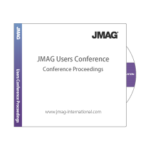Noboru Kikuchi
University of Michigan
Abstract
Among the tidal wave of innovation that has come to be symbolized by electric cars and wind power generators, a significant transition to high efficiency is being sought after in so-called mature models of electrical instruments such as motors and transformers, as well. In order to respond to this demand, it is effective to draw upon the strengths of analysis technologies like FEA and make achievements in electromagnetic field analysis.
From the standpoint of the utilization rate in electromagnetic field analysis design, however, it seems like it has not yet caught up with structural analysis. In the structural analysis field, which has more than a ten year head start on electromagnetic field analysis, is already commercially viable, and has over ten times the number of users, they use a better FEA and have incorporated it “naturally” into product designs. It is also continuing to evolve. Is there really nothing to be learned from this? Is electromagnetic field analysis evolving?
There is no doubt that electromagnetic field analysis will become an essential design technology in the future, as well. Or rather, it has to. In order for this to happen, those who are engaged in electromagnetic field analysis must grapple with new challenges without becoming satisfied with the technology and usage methods currently available.
In addition, among future analysis technology, multiphysics analysis is a vital issue, and analysis technicians cannot afford to shut themselves up in their own analysis specialties. It is necessary to actively understand the technology and culture of each other’s fields.
In this presentation I will compare electromagnetic field analysis with structural analysis and talk about what kind of simulation technology is necessary for electromagnetic field analysis to play more of an active role in product designs in the future, and the accompanying challenges in usage techniques. I will also present the direction of CAE as a whole along with the latest research results.
You need to sign in as a Regular JMAG Software User (paid user) or JMAG WEB MEMBER (free membership).
By registering as a JMAG WEB MEMBER, you can browse technical materials and other member-only contents for free.
If you are not registered, click the “Create an Account” button.
Create an Account Sign in



